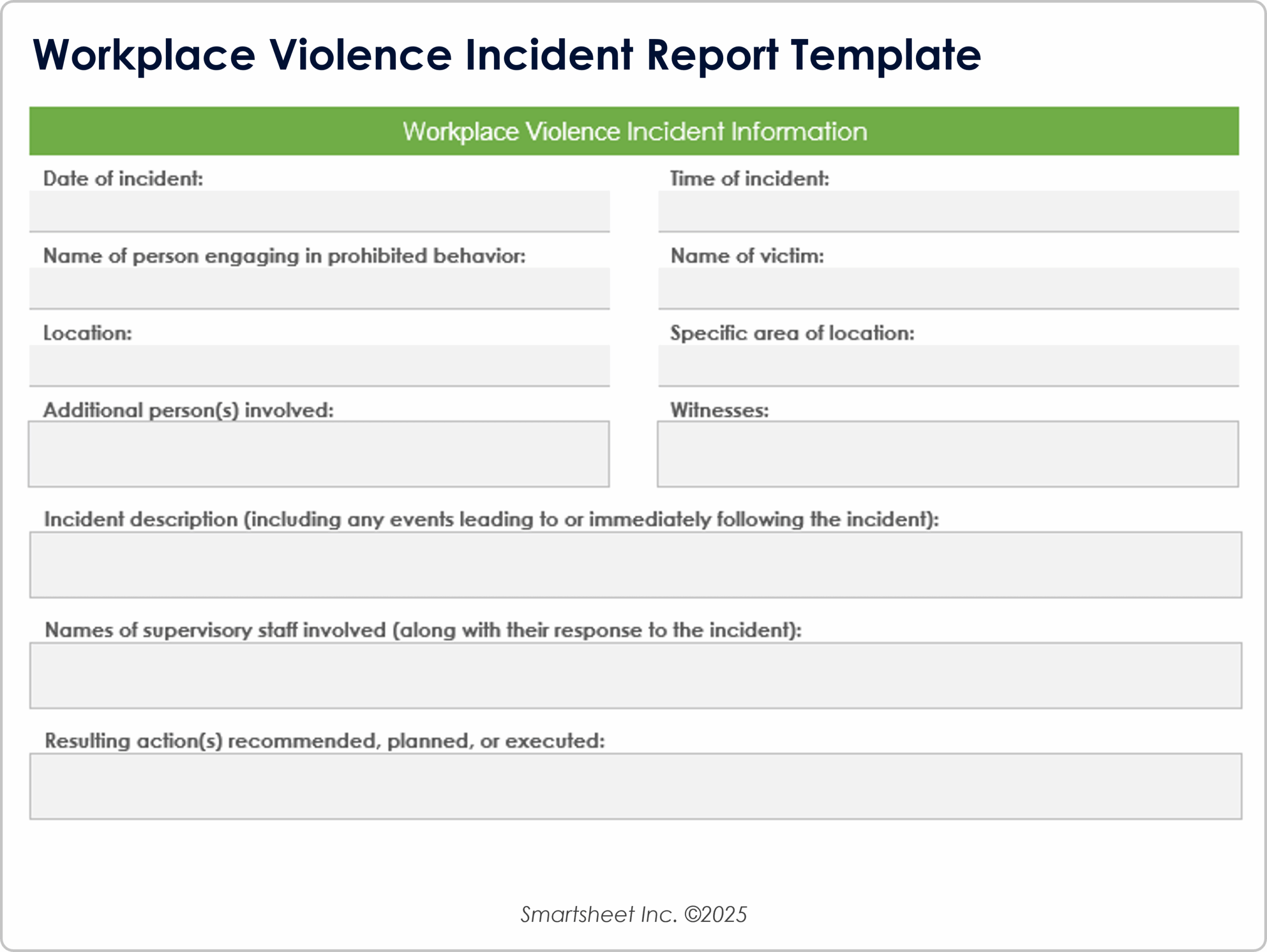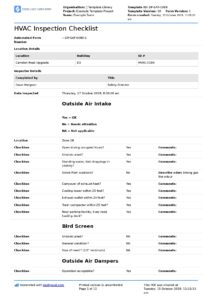Workplace violence, in any form, is a serious concern that demands immediate and systematic attention. It’s not just about physical altercations; it can encompass threats, verbal abuse, intimidation, and even emotional distress that disrupts the harmony and safety of an organization. When such an unfortunate event occurs, the ability to respond effectively, document thoroughly, and learn from the situation is paramount. This isn’t merely a matter of policy; it’s a fundamental aspect of protecting your employees and maintaining a healthy work environment.
The immediate aftermath of a violent incident can be chaotic, making it difficult to gather all the necessary facts accurately and comprehensively. However, a well-documented report is crucial for several reasons: it aids in a swift investigation, helps in understanding the root causes, ensures legal and regulatory compliance, and most importantly, lays the groundwork for preventative measures. Without a clear and consistent method for logging these events, valuable insights can be lost, and the organization remains vulnerable to future occurrences.
This is precisely where a standardized approach becomes invaluable. Having a pre-defined framework guides the reporting process, ensuring that no critical detail is overlooked. It streamlines the often stressful task of documentation and provides a consistent record for analysis. That’s why understanding and utilizing a robust workplace violence incident report template is not just good practice—it’s an essential tool in your commitment to safety and employee well-being.
The Indispensable Role of a Structured Incident Report
When an incident of workplace violence occurs, the moment is often charged with emotion and urgency. Without a clear, systematic way to record what happened, vital information can be missed or misremembered. A well-designed template acts as your organizational memory, ensuring that every significant detail, from the exact time and date to the specific individuals involved and the actions taken, is captured in a consistent format. This consistency is not just for neatness; it’s about building a reliable foundation for investigation, analysis, and future prevention efforts.
Beyond the immediate response, these reports serve as critical documentation for human resources, legal counsel, and even law enforcement. They provide objective evidence should the incident escalate to a formal complaint, legal action, or an insurance claim. Accurate reporting demonstrates due diligence on the part of the employer, illustrating that you take safety seriously and have a process in place to address these grave matters. It’s about protecting your organization from potential liabilities while upholding your ethical responsibility to your employees.
Moreover, each reported incident, regardless of its severity, offers a learning opportunity. By consistently using a structured template, organizations can begin to identify patterns, recurring locations, specific times, or even contributing factors that might otherwise go unnoticed. This data-driven approach allows management to proactively implement targeted training programs, revise security protocols, or adjust environmental factors to mitigate future risks, transforming a negative event into a catalyst for positive change.
A comprehensive workplace violence incident report template isn’t just a blank form; it’s a roadmap designed to guide the reporter through every necessary piece of information. It prompts for factual accounts, encourages objective descriptions, and ensures that subjective opinions are kept separate from verifiable details. This structured approach makes the report more credible and useful for all parties involved in the follow-up process, from investigators to decision-makers. It simplifies a complex process, empowering employees to report confidently.
Understanding the key components that make up such a template is crucial for both those reporting and those reviewing. These sections ensure that all critical aspects of the incident are systematically addressed, providing a complete picture for effective analysis and follow-up. By having these elements clearly defined, you prevent ambiguity and ensure clarity in the documentation process.
Key Sections You’ll Find in a Comprehensive Template
- Incident Details: Date, exact time, and precise location of the incident.
- Parties Involved: Names, roles, and contact information for the victim(s), alleged perpetrator(s), and any witnesses.
- Description of Incident: A chronological, factual narrative of what occurred, including specific actions, words, and behaviors.
- Injuries/Damages: Details of any physical injuries, psychological impact, or property damage.
- Actions Taken: Immediate steps taken at the scene, such as calling security, first aid administered, or notification of authorities.
- Evidence Collected: A list of any physical evidence, photos, video footage, or relevant documents.
- Reporting Person Information: Name, role, and contact of the individual completing the report.
- Follow-Up Actions: Space to outline what next steps are required, who is responsible, and deadlines.
Beyond the Form: Cultivating a Culture of Safety and Open Reporting
Possessing an excellent workplace violence incident report template is only one piece of the puzzle. Its effectiveness hinges entirely on how it’s integrated into the broader organizational culture. Employees must be aware of the template’s existence, understand its purpose, and feel confident and safe using it without fear of reprisal. This requires consistent training and communication, not just about the form itself, but about the organization’s unwavering commitment to addressing and preventing violence.
Leadership plays an indispensable role in fostering this culture. When management actively promotes a zero-tolerance policy towards violence, encourages open communication, and visibly acts upon reported incidents, it sends a clear message throughout the company. Employees need to trust that their concerns will be heard, taken seriously, and that appropriate actions will be taken to ensure their safety. This trust is built through consistent behavior and clear, transparent processes, making the reporting mechanism a cornerstone of a safe environment.
Regular review and adaptation of both the reporting process and the safety policies themselves are also vital. Incidents of workplace violence are not static; they evolve, and so too should your preventative measures and documentation tools. By periodically assessing the types of incidents reported using your workplace violence incident report template, identifying trends, and soliciting feedback from employees, your organization can continuously refine its approach to safety. This ongoing commitment ensures that your environment remains as secure and supportive as possible for everyone.
Building a truly safe and respectful workplace requires a multi-faceted approach, and thorough documentation is a foundational element. It’s about empowering everyone within your organization to contribute to a secure environment, not just reacting to problems but proactively preventing them. By having clear processes and tools in place, you’re making a tangible statement about the value you place on every individual’s well-being and their right to a workplace free from fear.
Ultimately, the goal isn’t just to fill out a form, but to cultivate an environment where potential issues are addressed before they escalate, and where incidents are handled with the utmost professionalism and care. This commitment to detail, combined with a strong culture of safety and transparency, allows for continuous improvement and ensures that your organization remains a secure and productive space for all employees to thrive.




